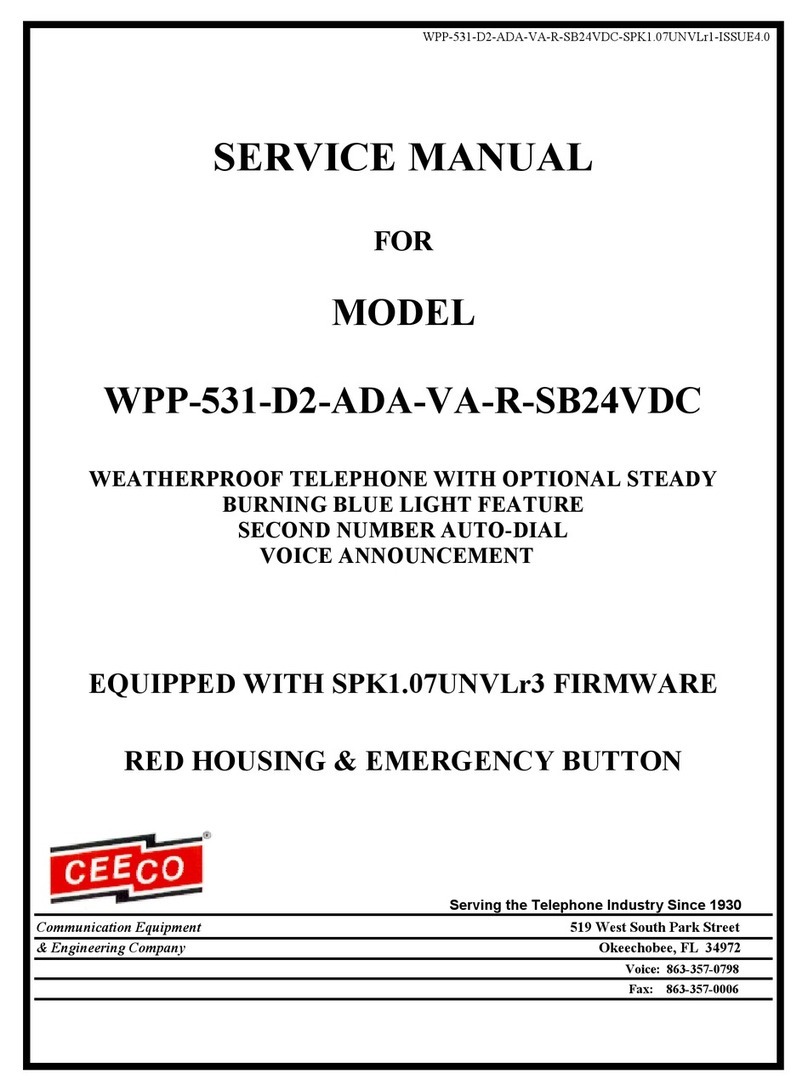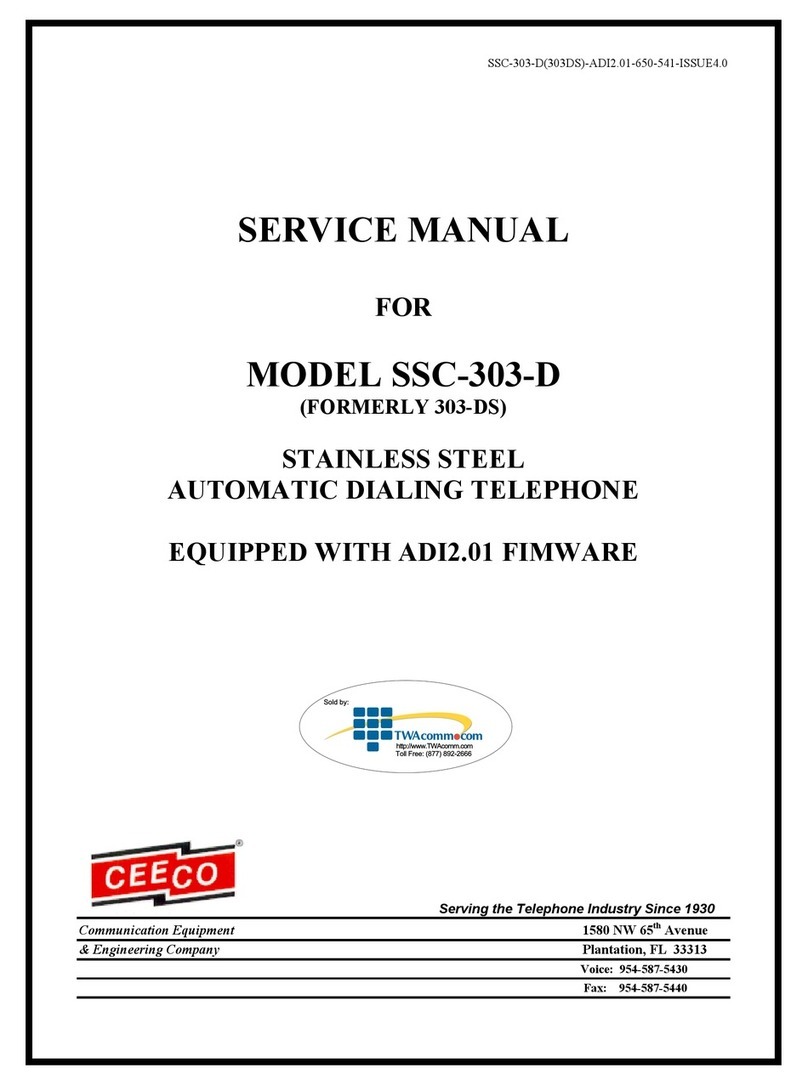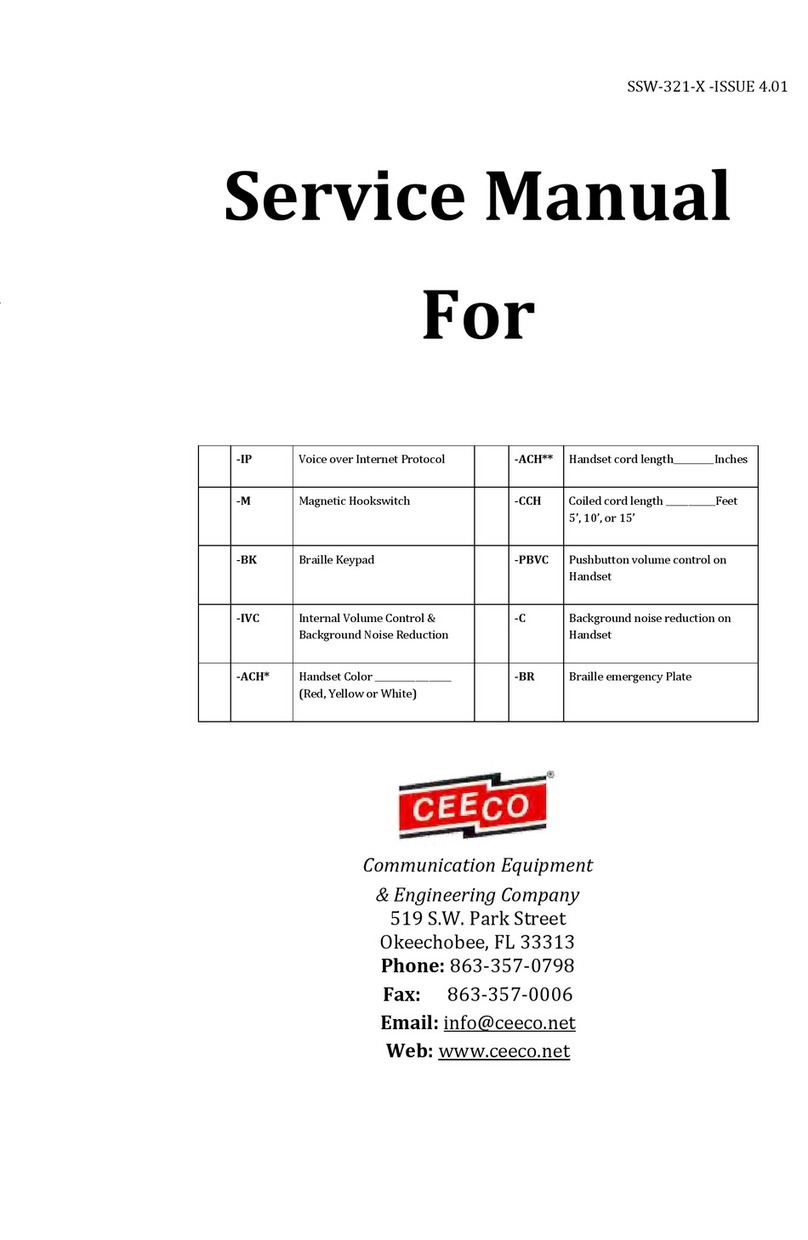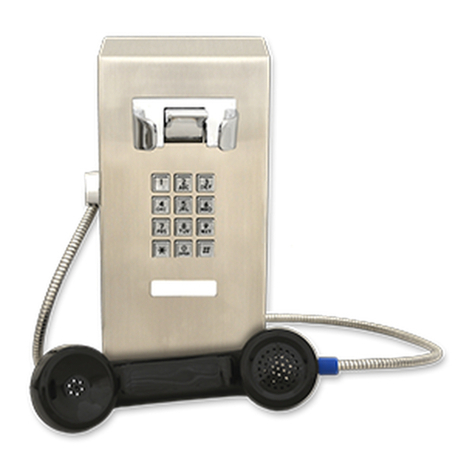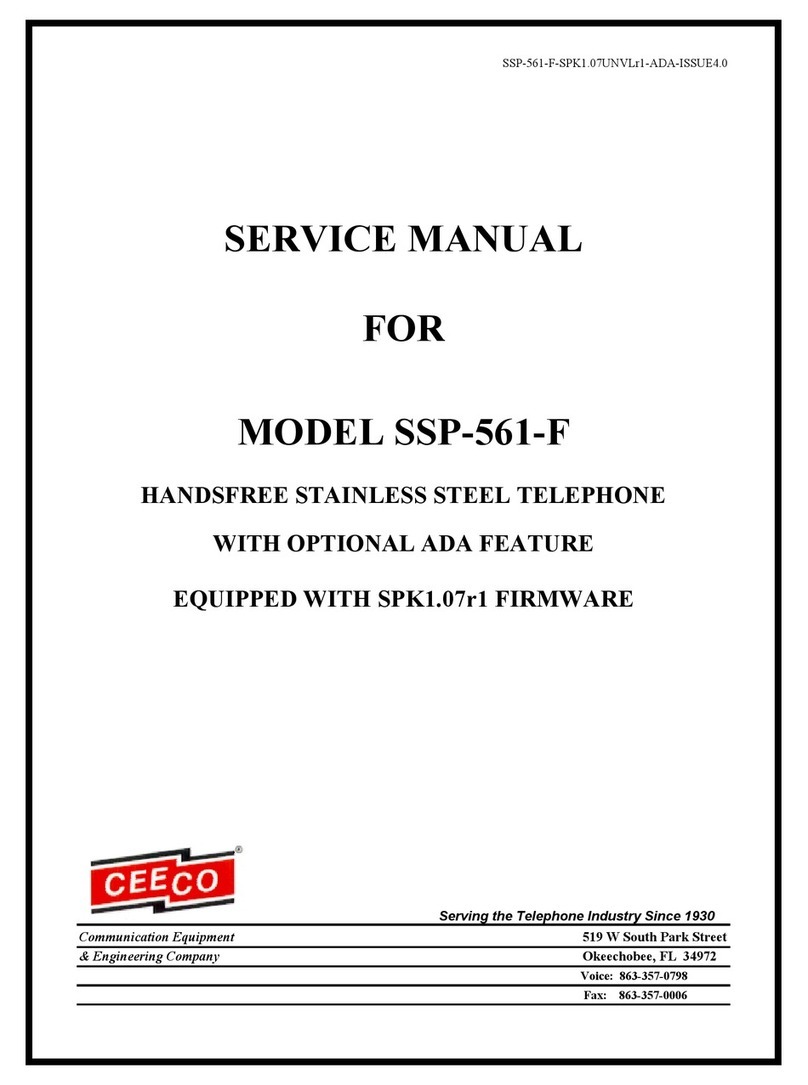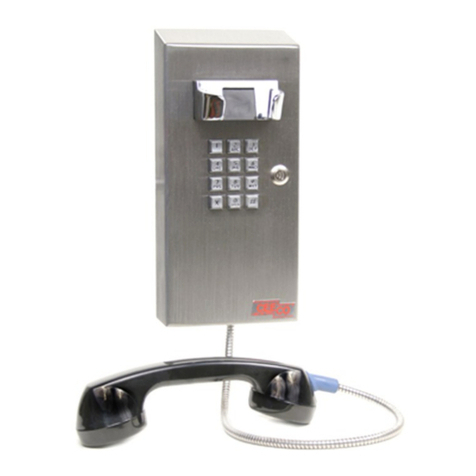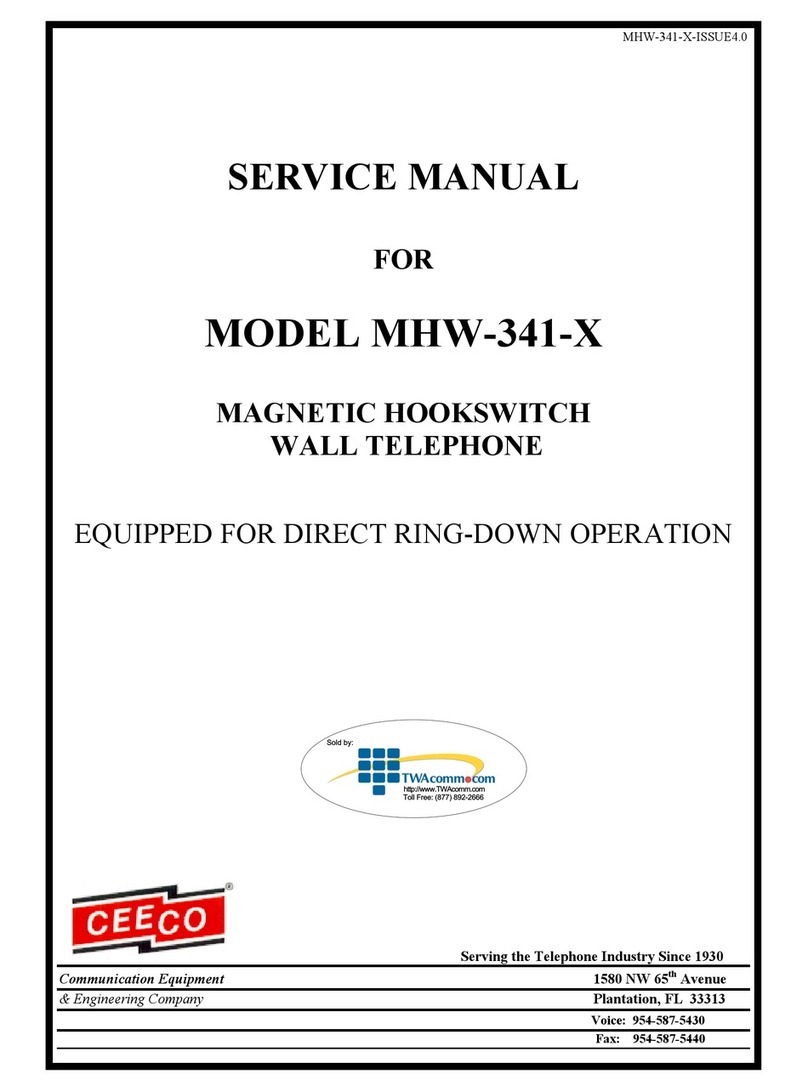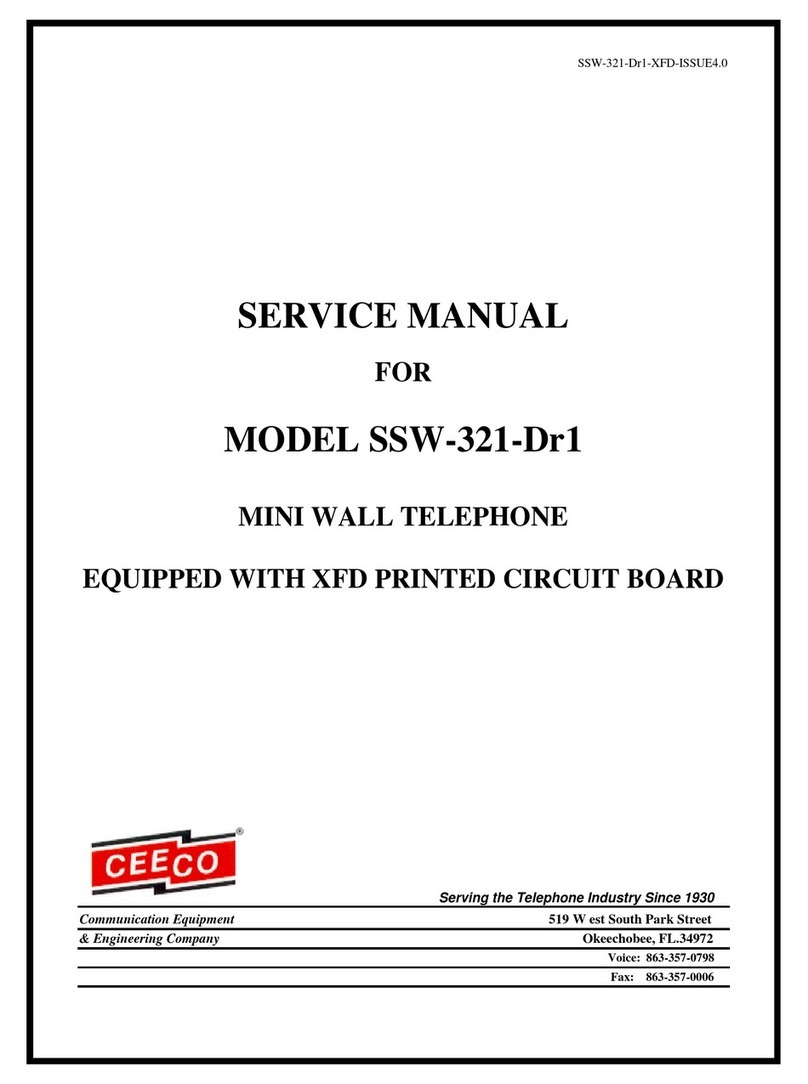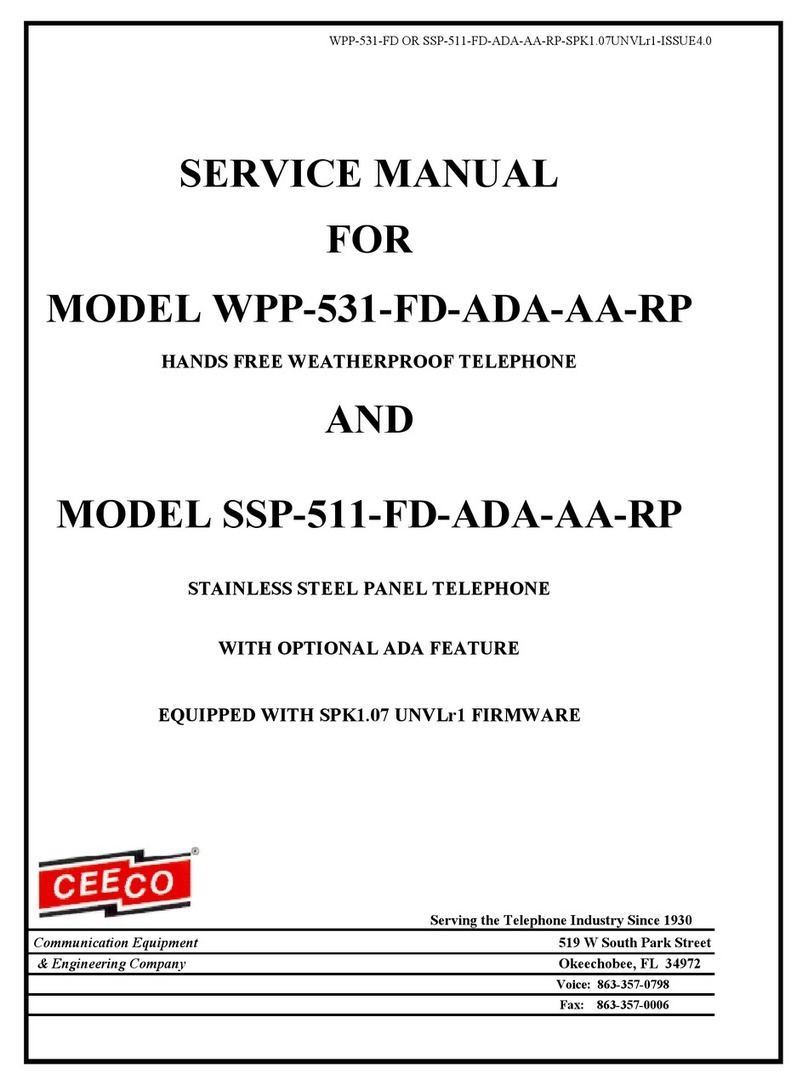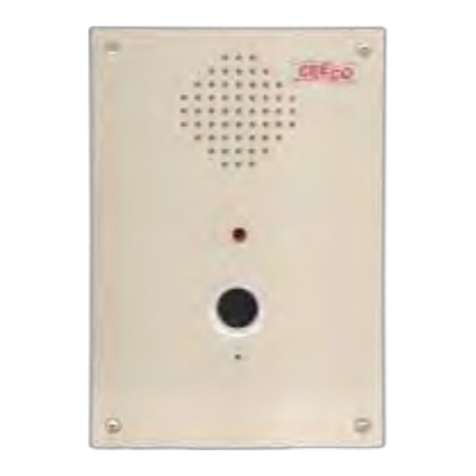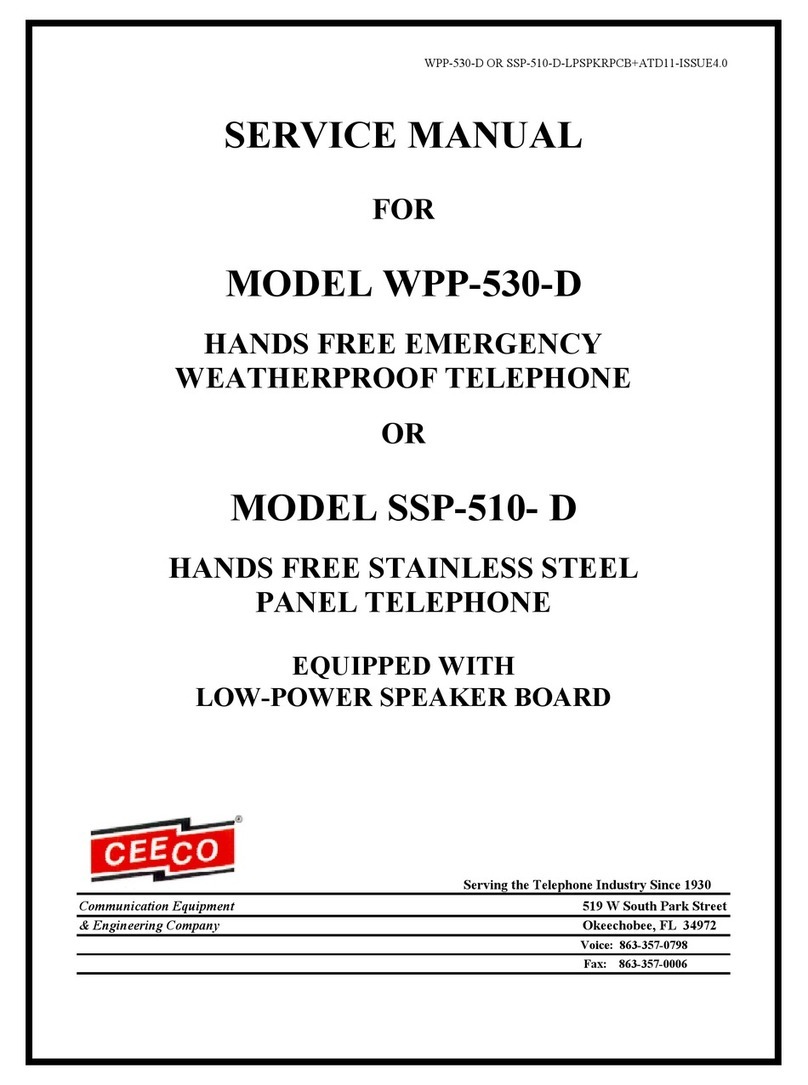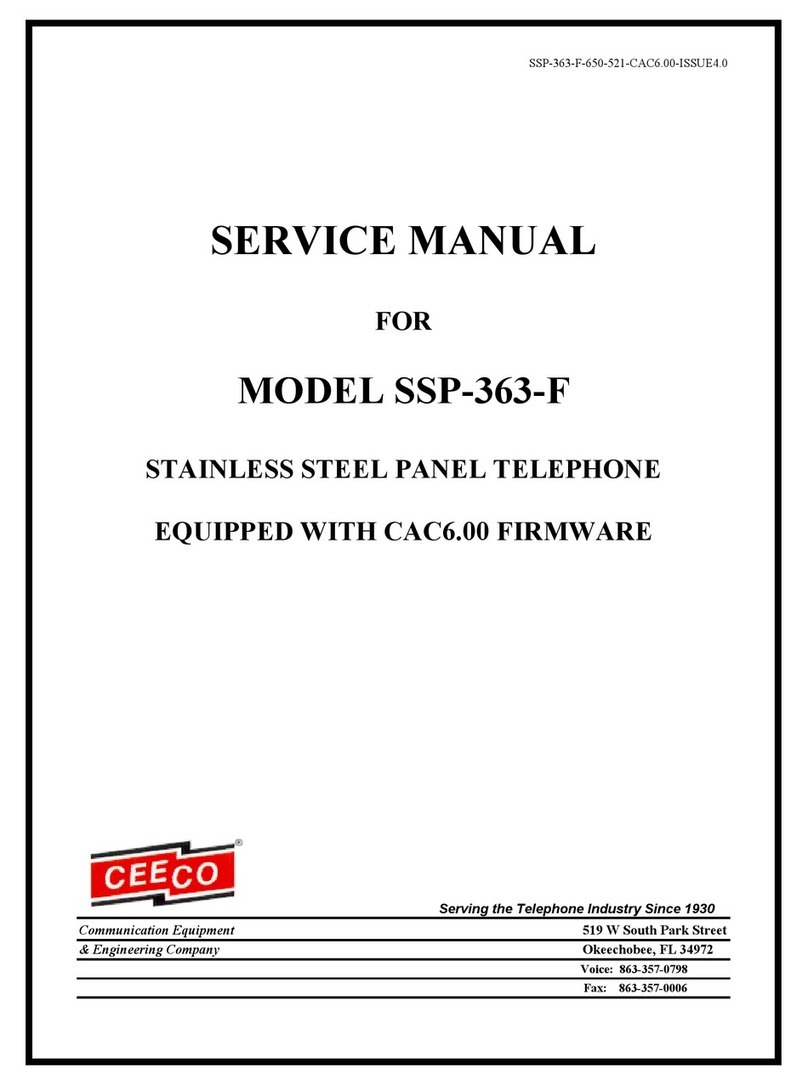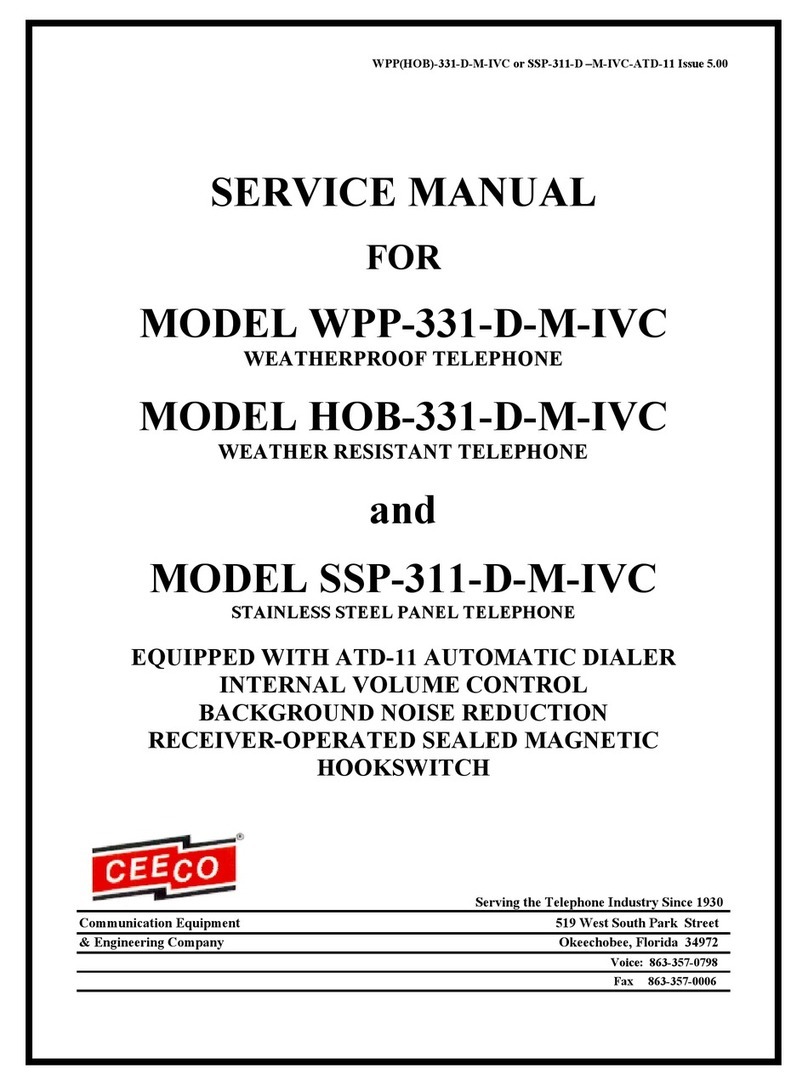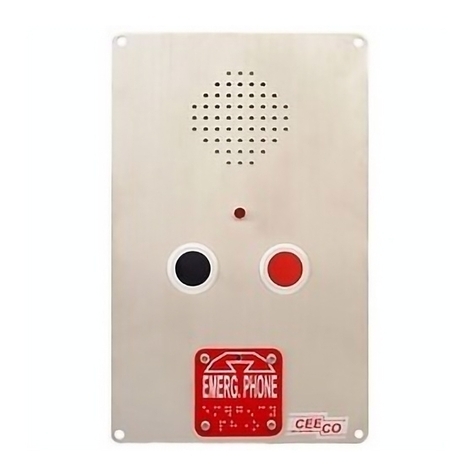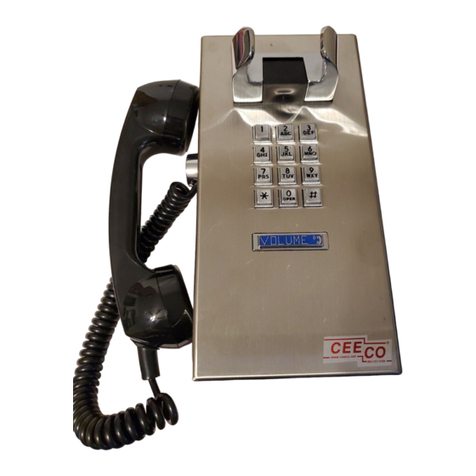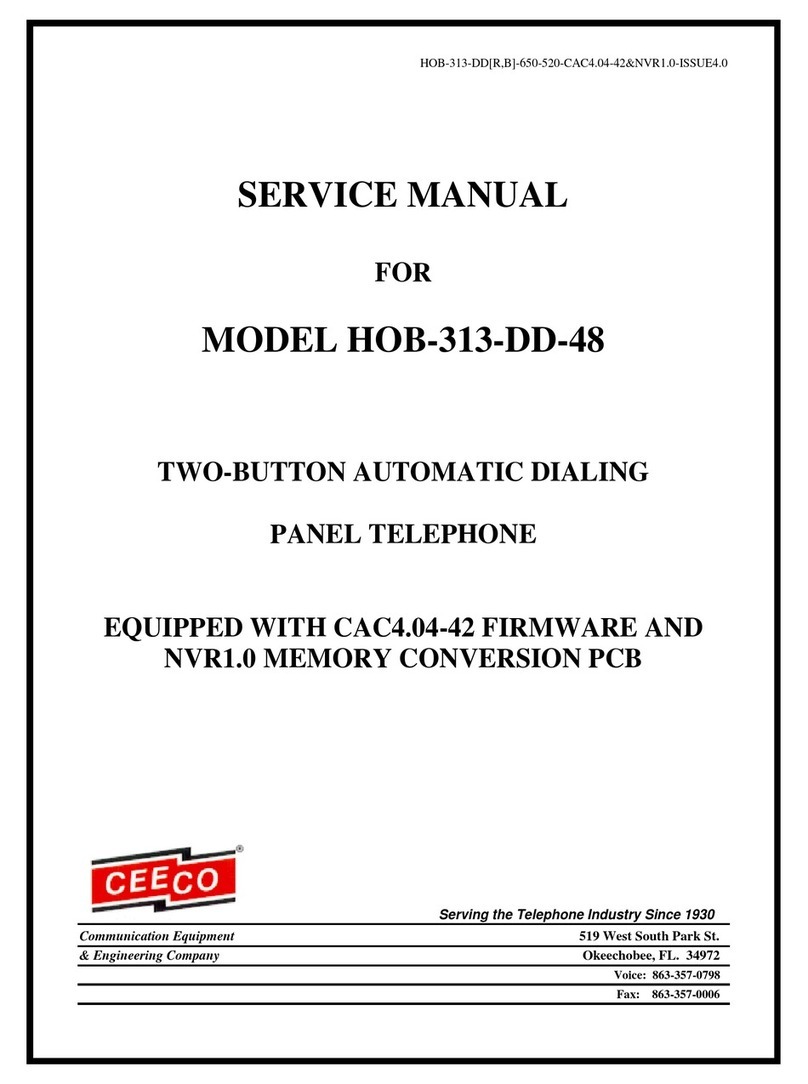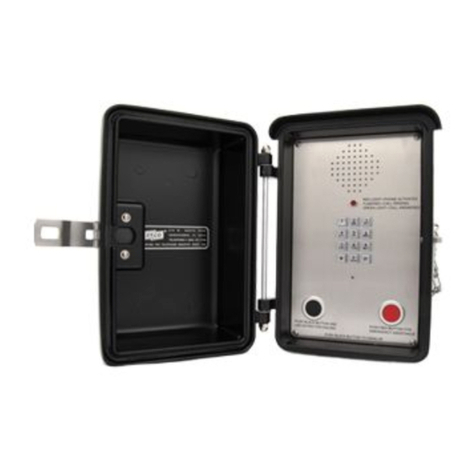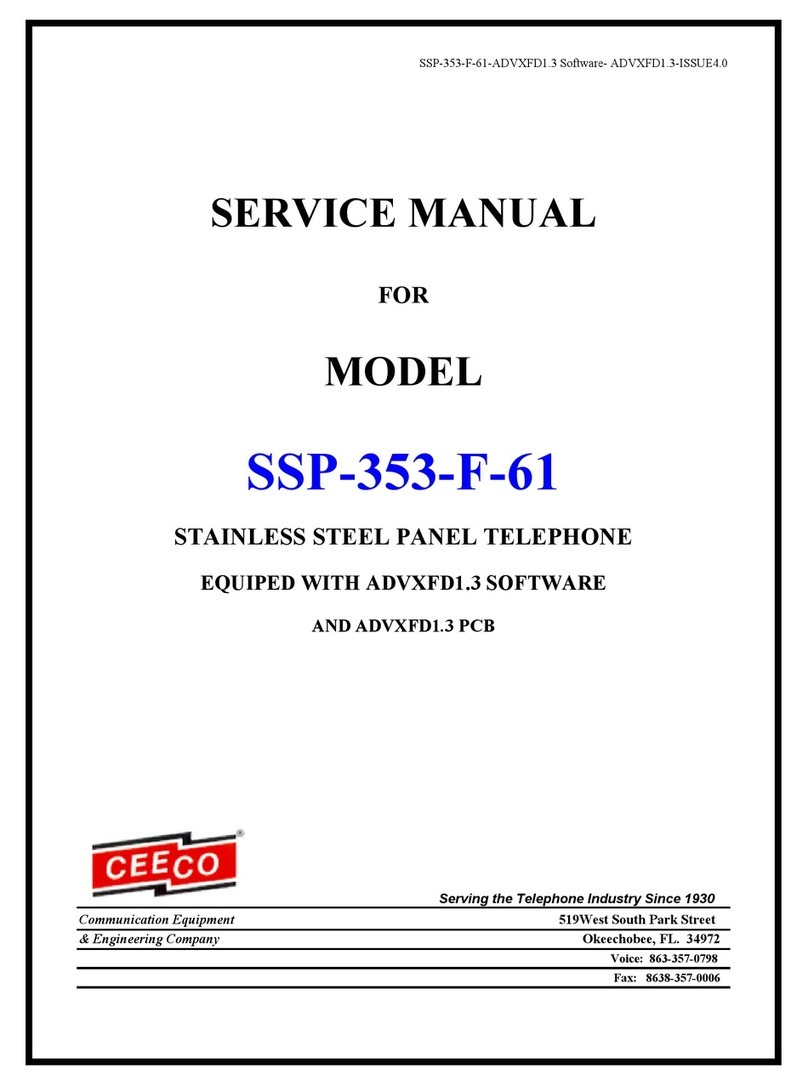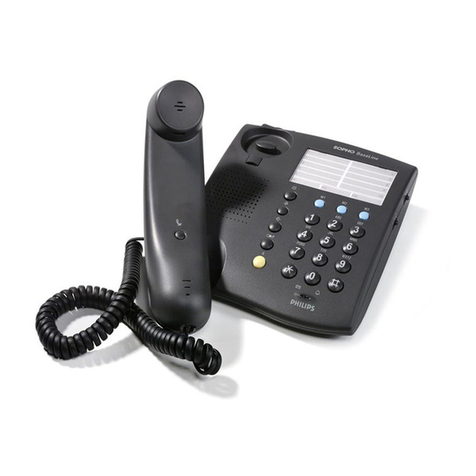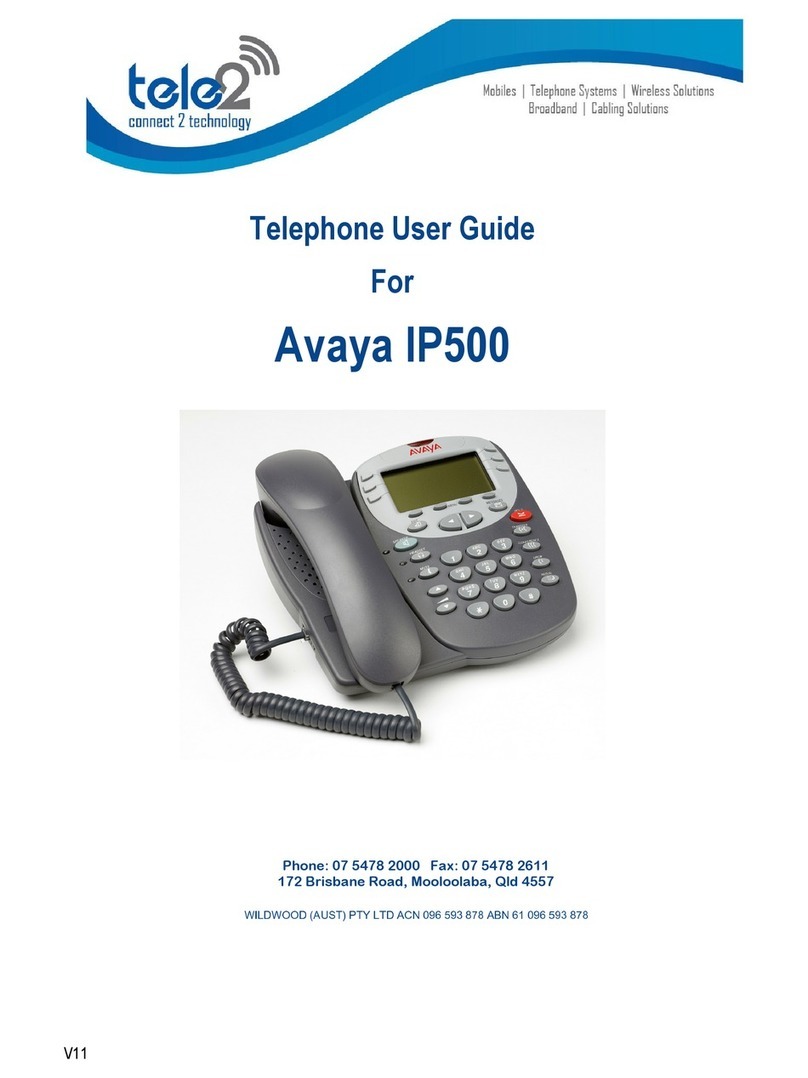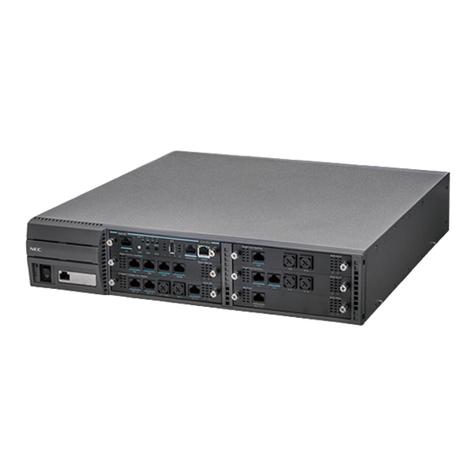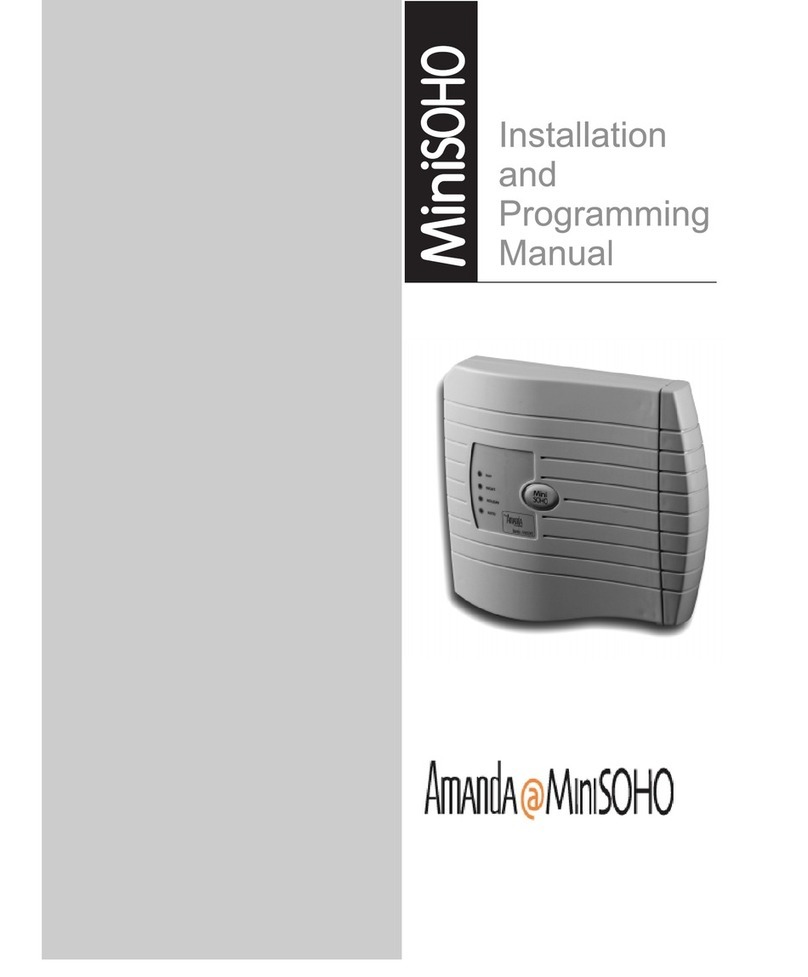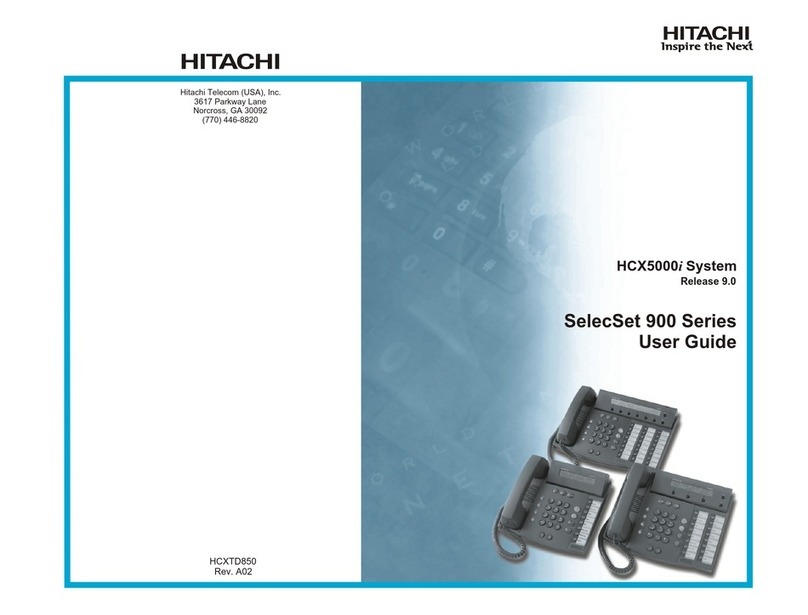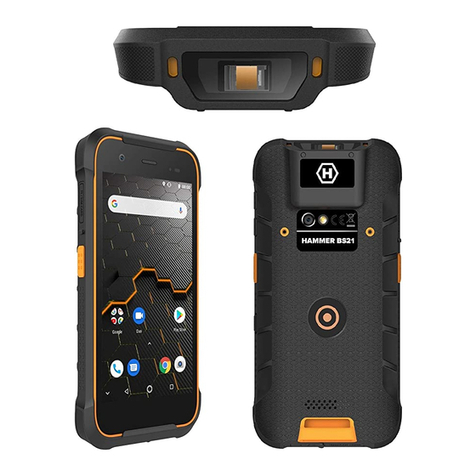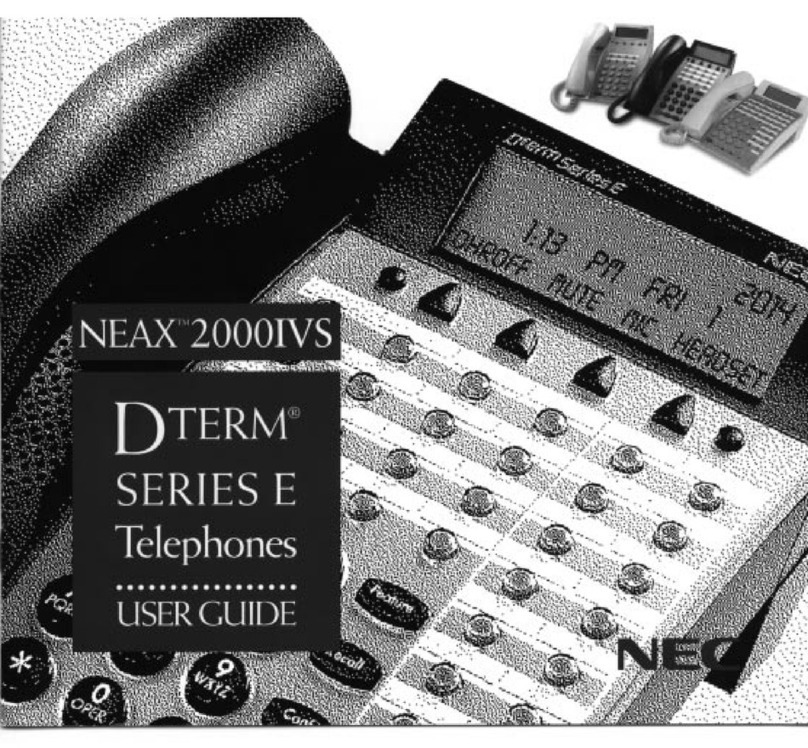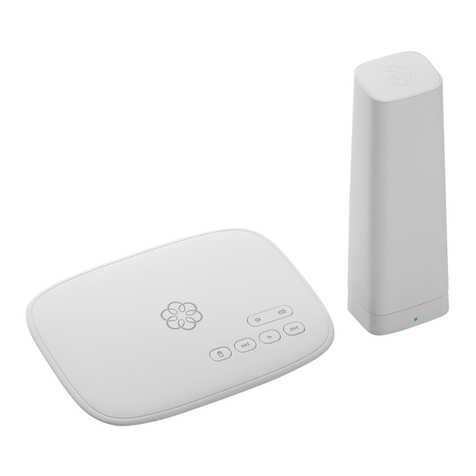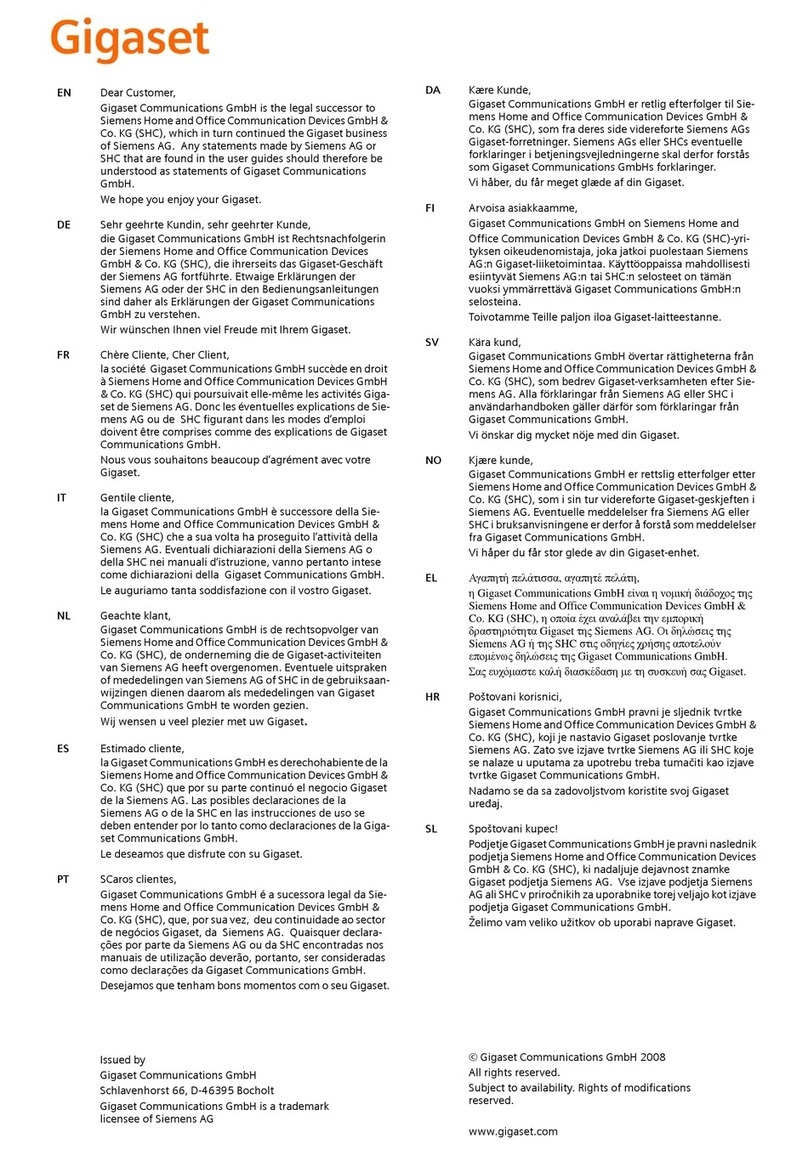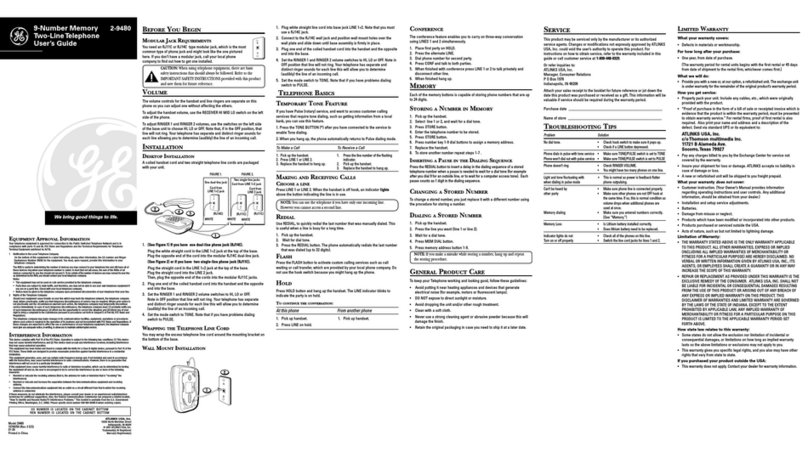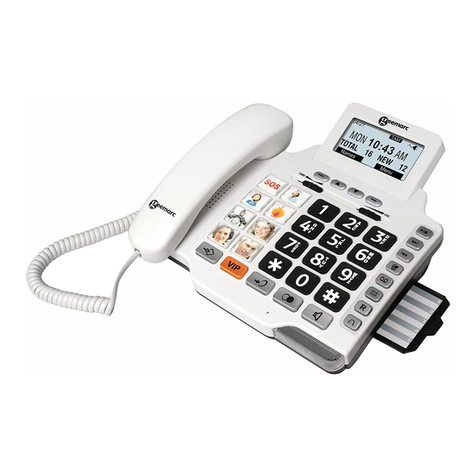3.0 PROGRAMMING
3.1 Remove the stainless steel assembly from the mounting box, if purchased
together. It will be necessary to use the security tool (sold separately as
CEECO part number 301-037) to remove the security screws. Connect
the telephone’s modular cord to a DTMF test set or a working telephone
line.
3.2 Looking at the rear of the phone, connect the programming keypad to
the white connector, which is hanging freely inside the phone. This
connector attaches to seven different colored wires and has a similar end,
which is already connected to the Printed Circuit Board.
3.3 Locate the two plastic mini-jumpers on the corner of the Printed Circuit
Board and move them to the "ON" position, as depicted on the last page
of this manual. Lift the handset and wait for dial tone.
3.4 Utilizing the programming keypad, enter # 9 7 on the keypad. This will
clear all field programmable memory.
NOTE: During programming it is essential to press the keys deliberately
and slowly. Missed or partial tones will result in improper programming.
3.5 If the phone must automatically dial a number, when the handset is
lifted, enter # 1 9 on the programming keypad, followed by the desired
number of up to twenty-five (25) digits in length. Once programmed, this
number will always dial, when the handset is lifted.
EXAMPLE: Entering #1918005551212 on the programming keypad will
cause the phone to automatically dial the number 1-800-555-1212, when
the handset is lifted.
Be sure to record your number in the Location #19 Table below for
future reference.
LOCATION #19 TABLE:
__ __ __ __ __ __ __ __ __ __ __ __ __ __ __ __ __ __ __ __ __ __ __ __ __
3.6 If the phone must automatically dial a second number, when the handset
Is lifted, enter # 2 0 on the programming keypad, followed by the desired
number of up to twenty-five (25) digits in length. In order for the phone
to dial the number stored in the #20 programming location, you must
select a “1” for Digit 1, under the #00 programming location (refer to next
section-3.7). You must also make selections for Digits 2 and 3
accordingly. Location #19 must be used in order to use Location #20.
